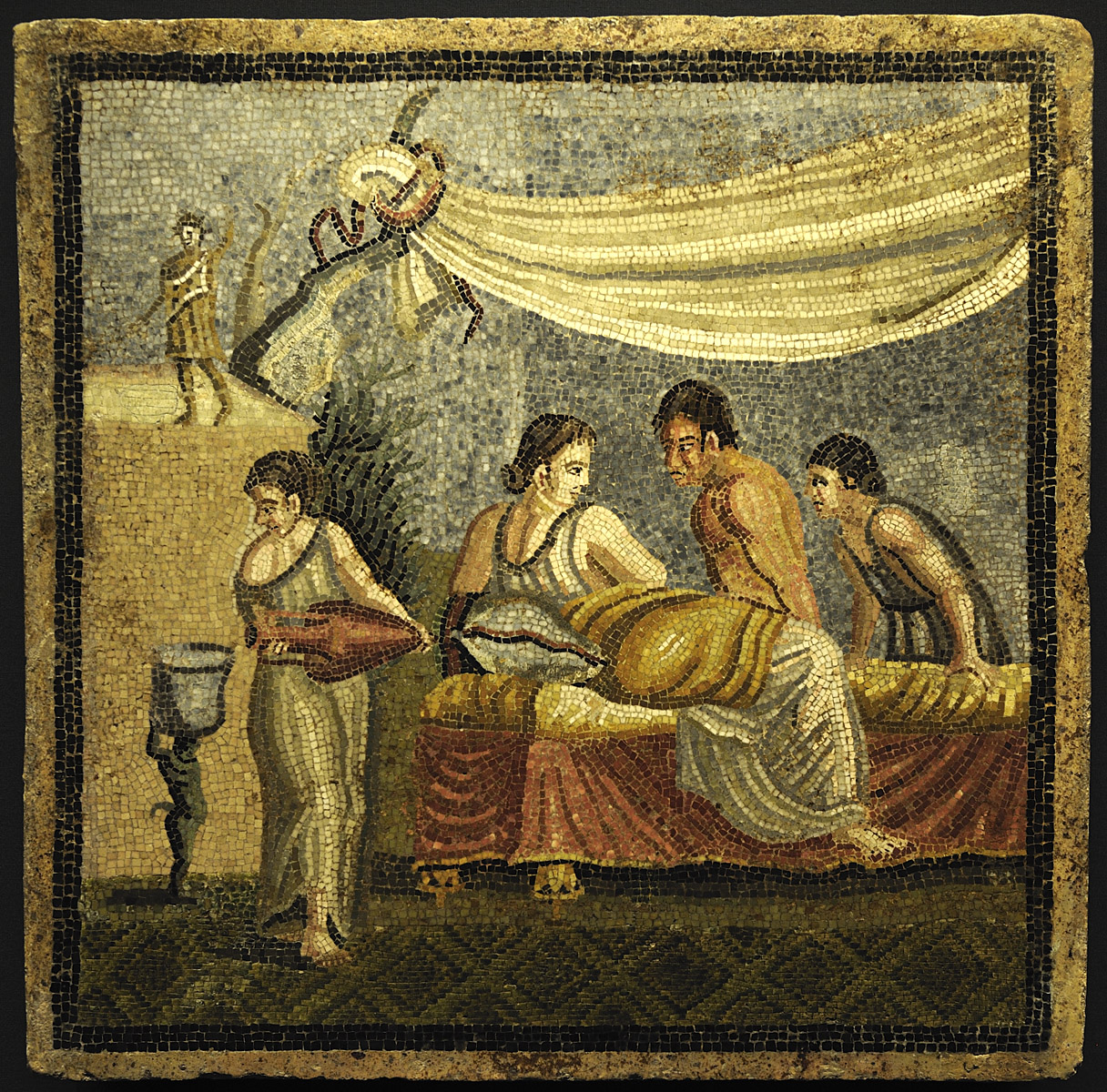
39.7 × 38.6 × 4.2 cm. Inv. No. II 9.Vienna, Museum of Art HistoryPhoto by Ilya Shurygin
Amorous scene.
39.7 × 38.6 × 4.2 cm.
Vienna, Museum of Art History
(Wien, Kunsthistorisches Museum).
The present mosaic was found in a Roman villa at Centocelle near Rome in 1865 and acquired for the imperial collections in 1874. Other mosaic pictures were discovered in the villa, one of which is the same size as our mosaic. It depicts a “comic mask” from the genre of New Comedy and is now in the Collection of Classical Antiquities in Berlin.
Pictures such as the present one provided the central motifs for large-size mosaic floors. While the extensive, frequently geometric patterns were directly applied to the floor in three layers of plaster of varying thickness, the central panels were often created separately. In a workshop the picture was assembled in a clay frame from stones only a few millimetres in size (opus vermiculatum). Afterwards, the completed emblema (Greek: emblema, literally, insertion or appliquéd decor), including the frame, was set into the floor.
A depiction of the same intimate scene was discovered in a wall-painting in a room of the Villa Farnesina in Rome (today in the Museo Nazionale Romano, Palazzo Massimo, Rome). This painting, which dates from around the birth of Christ, differs from the present mosaic in some details and thus suggests that both pictures are based on a common Hellenistic model. The execution and style as well as the circumstances of its discovery in a Roman Villa at Centocelle support the assumption that the Vienna mosaic dates from the 2nd century AD.
Info: museum information materials.
© 2006. Description: Masterpieces in the Collection of Greek and Roman Antiquities. Kunsthistorisches Museum. SKIRA, 2006, p. 196, cat. 85.